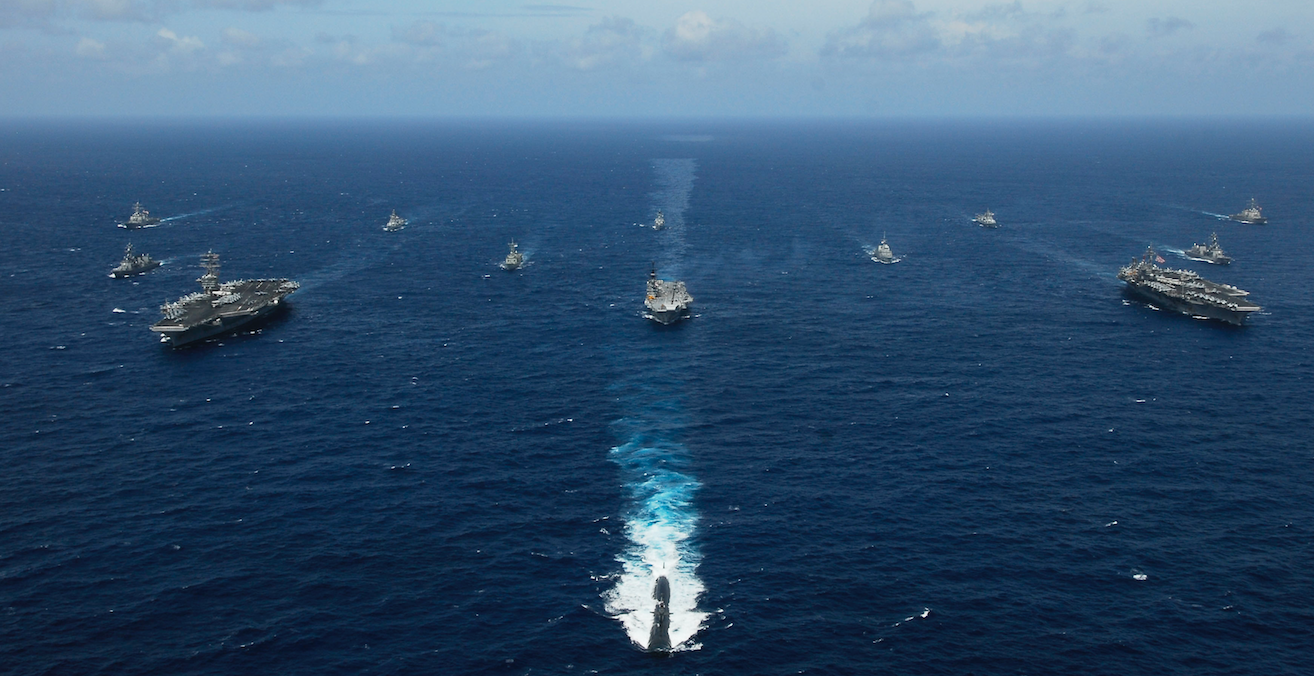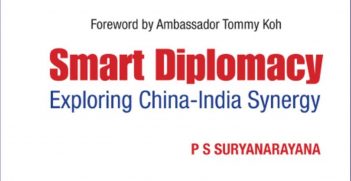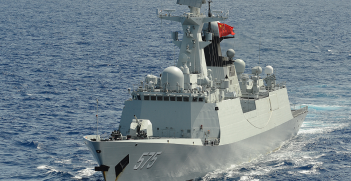Challenges and Prospects for India-Australia Maritime Cooperation

Despite the vast opportunities to increase India-Australia maritime cooperation, different traditional instincts about security collaboration and both states’ fear of upsetting China is a major hindrance to an otherwise fated marriage.
The Indian Ocean region currently faces some of the most challenging and exciting geopolitical transformations, with China and India playing a major role in determining the larger strategic manoeuvres of other regional states and extra regional powers such as the United States. The rise of new and emerging states such as Australia in this geo-economic space has given rise to new geo-strategies that the nation wishes to increasingly employ, looking back at a region that for a long time had been ignored.
India and Australia in 2008 signed a “Joint Declaration on Security and Cooperation” which wished to bring together the strategic perspectives of both the nation states through a “cooperative security framework.” One of the key features of this declaration was increased cooperation in the maritime domain at a strategic level. For Australia, the Indian Ocean region has a prominent place in its strategic calculations, having the longest coastline and largest area of maritime jurisdiction, the emergence of newer nation states within Indian Ocean has made its role greater in the region.
India, on the other hand, focuses on the Indian Ocean region as being a “strategic bridge with the nations in its immediate and extended maritime neighbourhood.” India has since the 2008 terror attacks in Mumbai, refocused its maritime policy and more particularly within the region. Its increased emphasis on the protection and assurance of “safe passage” in the region comes from two factors; one is China’s increased presence and linkages with other Indian Ocean Littorals and the second, is India’s ambition to be a “net security provider” to the region. The nation is also increasingly looking towards expanding its influence in the fast emerging construct of an “Indo-Pacific” region. The “Quad” — Quadrilateral Security Dialogue — was a key enabler in expanding India-Australia partnership within the Indian Ocean and the Indo-Pacific.
Geographically, Australia has approximately 86 million square kilometres of Exclusive Economic Zone (EEZ) along with the surveillance and defence of the Australian Antarctic EEZ within the region. The nation’s responsibility to provide safe passage and navigation to ships and submarines could be one of the reasons why an increasingly aggressive China within the Indo-Pacific region seems to be of great strategic concern. A brief assessment of Australia’s maritime strategy gives one an understanding of the need of a comprehensive strategic outlook’s for the country to effectively pursue its national interest in the region.
There is however a lack of coordination between national- and state-level instrumentalities wherein Australian policymakers seems to largely ignore maritime affairs in what some analysts call “sea-blindness.” In 2005 the then chief admiral of the Royal Australian Navy Chris Richie remarked on the “ambiguous place of the seas” in Australian national life, urging for a re-examination of Australia’s land-based identities.
In contrast, India is marking the 21st century as the “century of the seas” for itself. The Indian Navy is central in promotion of the country’s national interest and security. The country’s maritime security strategy under the present leadership carries a larger “strategic angle” and wishes to embody an “Indian naval vision” for the region. Former admiral and chief of the Indian Navy, R.K. Dhowan, has highlighted three significant developments in the nation’s maritime security architecture. First is India’s move from a “Euro-Atlantic” to an “Indo-Pacific” focus which seems to have largely repositioned the country’s global economic and military power within the region. Second is the recognition of “new and emerging threats” in the form of piracy and terrorism which has made India relook its offshore and coastal security. Third is an acknowledgment on the part of the administration in enabling the Indian navy to perform a more strong and enhanced role in the country’s maritime security.
Australia is one of the most vocal supporters to India’s ambition to be a regional “net security provider.” Australia aims to create deeper maritime relations with India as a counterbalancing force against China. At the same time, the island state wants to avoid picking sides and getting embroiled in a confrontation between the United States and China. Australia has been subtly ramping up security cooperation with India through extensive maritime exercises, such as through the March 2019 “Indo-Pacific Endeavour.”
India’s policies towards the Indian Ocean have a global perspective and appeal that could work in Australia’s favour as they establish more meaningful bilateral security arrangements. There are however some challenges to fruitful maritime cooperation between both nation-states. The increasingly aligned interests of both nations have helped establish academic dialogues about making India-Australia partnership more concrete. Australia’s efforts to woo India are more than evident than India’s more measured steps. In 2011, for example, Australia removed its ban on Uranium sales to India after years of hesitation.
The “Quad” — despite having re-energised the spirits of the “maritime democracies” of the Indian Ocean and the “Indo-Pacific” states — has largely been a talking shop with more rhetoric than action. Another challenge for Australia is India’s insecurity and belief that visibility is vulnerability. It therefore feels that by closely aligning itself with the United States and its allies it may disturb the already delicate maritime chessboard of the Indian Ocean region and prompt the dragon to move. India also fears that Australia, as a long-term strategic ally to the United States, may eventually isolate India in order to promote US predominance and leave India high and dry.
The two nations have vast opportunities to increase maritime cooperation. Joint exploration efforts could support the stable growth of both economies. Participation in institutions such as the Indian Ocean Rim Association (IORA) and Indian Ocean Naval Symposium (IONS) can deepen their relations. However, different traditional instincts about security collaboration and both states’ fear of upsetting China is becoming a major hindrance in an otherwise fated marriage.
Kanchi Mathur is a postgraduate researcher and Masters student at the Department of Geopolitics and International Relations, Manipal Academy of Higher Education.
This article is published under a Creative Commons Licence and may be republished with attribution.





